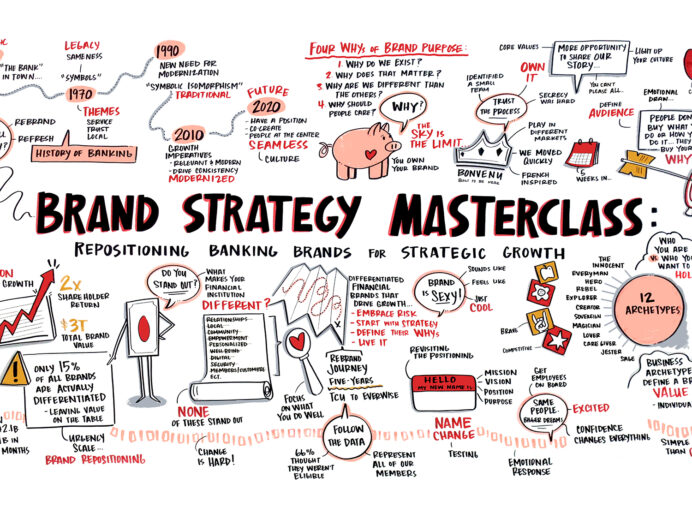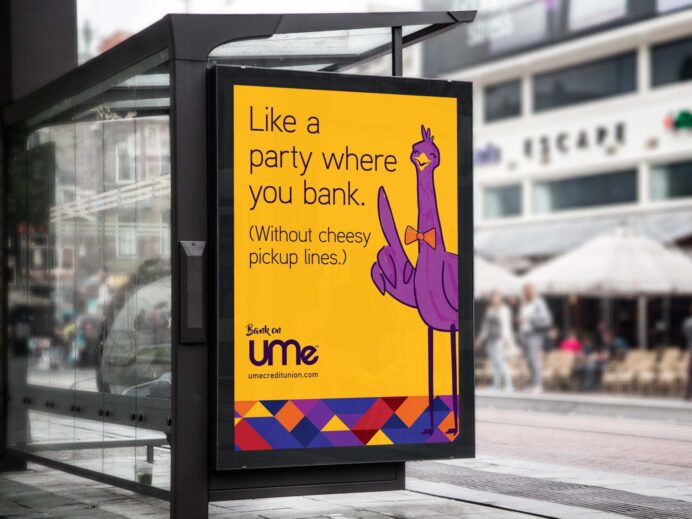In the face of rising merger and acquisition activity and key branch network expansions that increase the local influence of financial institutions, banks and credit unions face critical considerations for their brand – namely, their names.
For some companies, the rebranding process itself brings about the need for a change. “When everything else is getting a refresh – a new brand strategy, updated messaging, a fresh design – the name is looked at with more scrutiny,” according to Howard Breindel in the Forbes article on brand renames. “It’s no surprise clients consider a change [then], because their current name is unknown and meaningless or is burdened with meaning the company wants to move away from.”
Looking across industries at other successful brand name changeovers, it’s clear that deciding to rebrand may not be easy, but there are ways to do it successfully, resulting in even more brand differentiation. What’s equally clear, though, is that growth and local considerations are at the heart of most name changes. There are even more complicating factors in the (re)naming process that must be considered for financial institutions. With years of rebranding experience in financial services, we’ve rounded up our best counsel and consideration criteria to help inform the decision-making process around naming, concentrating first on geography.
Consider Change: Geography
One of the biggest drivers for change is when a brand name is geographically limiting and financial institution wants to expand into new growth markets. If a brand name refers to a geographic area, for example, and an FI wants to expand beyond that region, it’s unquestionably time to consider a new brand name. Among the most common reasons banks and credit unions recognize the need for change, geographic limitation can stunt current and future growth and limit a bank’s prospects right at the time they need to optimize opportunities most.
Here are some relevant examples of FIs we helped rename and rebrand, positioning the new brand to extend outside of those areas of geography.
First State Bank of Arcadia was a family of banks with five different names under one owner – the Crews family. Originally named after the smaller of five banks – First State Bank of Arcadia – the moniker no longer served them as they grew. While not unusual, this FI needed a new go-forward brand name to use in new markets and potentially for future consolidation of brands. Crews were the name the FI had selected for a branch in the expanding market of Sarasota. Leaning on the positive reputation of the family name, the bank chose Crews Bank & Trust to be the representation of the new name and the new brand for the rest of their network.
Western Federal Credit Union was both limited in geography and in audience with its name. Wanting to grow into new markets that were not in the western portion of the country, the credit union’s name pointed to a now-defunct Special Employee Group (SEG) group of members – airline employees – that it had already grown beyond. As the CU eyed new opportunities, Western needed an updated and refreshed brand as a launchpad to appeal to new audiences in new markets, especially since it was already expanding into 17 different states through acquisition. The new UNIFY name and brand was an almost literal manifestation of change – for the CU, it meant uniting under one banner and for members, it represented unifying their finances virtually and physically, wherever they might be located.
Huntington State Bank began as a hometown institution based in Huntington, TX. Locally owned and community-oriented, the FI banks on its strong local roots and relationships. As Huntington State Bank and two other affiliated banks were all coming together, UBank was a new brand name the bank selected as the new banner under which it would unite. To ensure that the new brand name was right for the bank and right for their markets, bank leadership reached out to our agency to conduct a brand strategy exercise and verify whether the new name would support their strategy. The resulting UBank brand set the stage for a uniquely ownable way of serving the East Texas community.
Erie Community Credit Union was one of two CUs in the market of Erie, Pennsylvania with Erie in their name. Competing head-to-head with another credit union in one finite geographic area is challenging enough, but made infinitely more difficult when both have the same location in their names, leading to a lack of brand ownability and market confusion. Consequently, the CU needed a new name that was unique to them and didn’t limit any future expansion outside of Erie. With Tendto, the end result is a distinctive name that demonstrates how the credit union tends to see – and do – things differently.
In our next Perspective on name rebrands, we will address other instances when FIs should consider change, like credit unions with inherently audience-limiting names because of their Special Employee Group (SEG) or local roots. For more about naming practices within rebrands or to speak to one of our branding experts, email us at [email protected] or call (678) 412-6903.
Adrenaline is an experience design agency that creates and implements end-to-end branded experiences through creative and environmental design. We enhance our clients’ customer experiences across digital and physical channels, from their branding and advertising to design and technology in their spaces. After transforming an organization’s brand, Adrenaline extends it across all touchpoints — from employees to the market to in-store environments. And, we focus on serving industries that sell human experiences including financial, healthcare, sports and entertainment.








